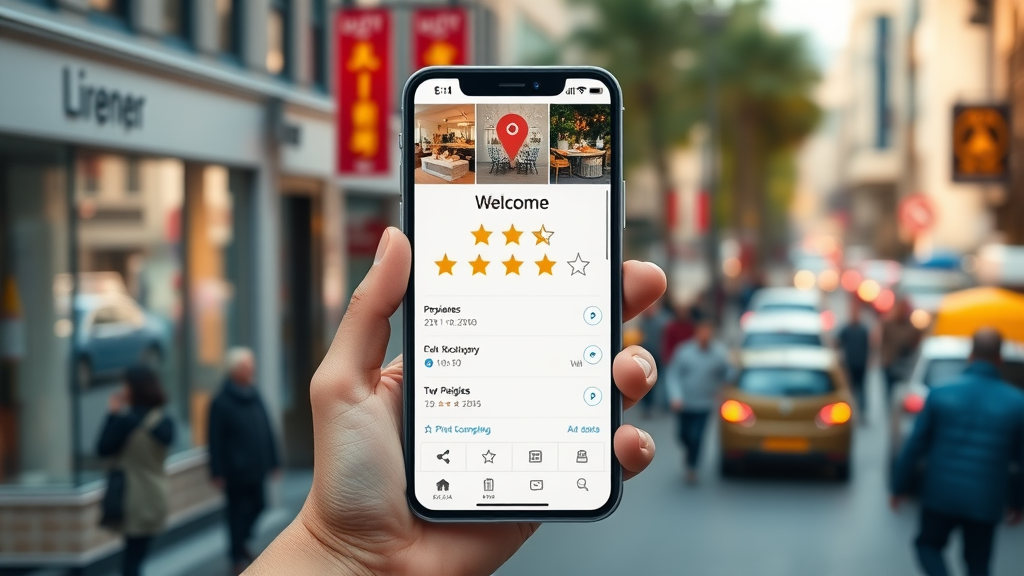Did you know that less than 1% of searchers click on results from page two? Imagine the web as a massive race—with only ten finish-line ribbons placed at the front of each search query. If your site doesn’t sprint into the top 10, most visitors will never even see your name. Learning how to get in top 10 SERPs isn’t just a clever move—it’s the lifeline your site needs to rank high and expand its organic search presence through an effective SEO strategy that targets essential SERP features and optimizes for search engine results pages. Today, we’ll unlock powerful ranking secrets through real-world examples, expert stories, and actionable steps you can start right away.
Key Takeaways: What You’ll Learn About How to Get in Top 10 SERPs
Why your SERP ranking defines your site’s visibility and business success
The step-by-step process to rank high with actionable, real-world examples
How to analyze SERP features and leverage them for a competitive edge
Expert insights on common pitfalls and emerging opportunities in search engine optimization
“Did you know that less than 1% of searchers click on results from page two? Mastering how to get in top 10 SERPs isn’t just smart—it’s critical.”

A Surprising Truth: Why Just 10 Spots Matter Most in Search Engine Results
The difference between appearing on the first and second page of search engine results is night and day. Studies show that over 95% of all clicks go to the top 10 search engine results, highlighting the critical importance of ranking high in these coveted positions. This is why understanding how to get in top 10 SERPs is vital for anyone looking to grow their web presence, boost sales, or build a following. If you think about the web page as real estate, then those first ten positions are like the hottest storefronts on Main Street—gleaming, high-traffic, and fiercely contested.
Achieving a spot on the first page doesn’t happen by accident—it requires careful SERP analysis, a strong SEO strategy, and dedicated effort to understand which search engine results and SERP features drive ranking success. Businesses that rank high consistently optimize for organic search, learning how to leverage both technical expertise and creativity. In the following sections, we’ll break down these principles into compelling stories, step-by-step tactics, and examples that anyone—no matter your starting point—can apply with real results.
As you refine your approach to SERP analysis and target keywords, it's also important to consider how evolving search behaviors—such as voice search—are influencing your SEO strategy and search engine result rankings, enabling you to rank higher in competitive niches. For a deeper dive into adapting your keyword research and on-page tactics for the latest trends, explore how voice search is changing keyword strategies and what it means for your ranking potential.
What Does It Mean to Rank High? Demystifying SERPs and SERP Features
Understanding the Engine Result – From Position Zero to Page Two
Let’s step into a live search engine result page (SERP). At the very top sits the coveted featured snippet—also called “position zero”—which offers a short, direct answer to a search query. Just beneath are organic listings, which are the classic “blue link” results most users expect. These first ten results—whether blended with ads, maps, or knowledge panels—make the difference between winning and missing out. If your web page lands outside this set, you’re left in digital obscurity.
Search engines like Google update search results pages thousands of times a year. Knowing the engine result landscape is about understanding which spots offer visibility and which features matter most—be it images, videos, reviews, or local packs. For example, an ecommerce page optimized for organic search may suddenly leap into a featured snippet placement, capturing dramatically more clicks. The real gold lies in learning to target and adapt to different SERP features—from rich snippets to AI-powered answers—that change what’s possible for your content.

SERP Analysis: Identifying Crucial SERP Features to Target
To truly rank high, you have to perform detailed SERP analysis and see the battlefield. SERP analysis means looking at the first page for your target keywords and noting which features dominate—are there map packs? Review stars? Image carousels or direct answers? If so, then simply targeting traditional blue links will likely leave you behind. SERP features like FAQs, videos, or people-also-ask boxes siphon clicks—and offer real opportunities if you know how to optimize for them.
For example, a business aiming for “best running shoe” should analyze the first page and notice that review stars, images, and shopping carousels play a key role. By updating product descriptions to earn those review stars (using proper schema markup) and submitting high-quality images, you elevate your chance to appear in those specialized, attention-grabbing slots. Smart SERP analysis turns you from a reactive participant into a strategic player, letting you claim your niche amid shifting search engine results.
Case Study: How SERP Features Changed a Brand’s Fortune
Take the story of a boutique recipe blog that noticed a spike in traffic after earning a featured snippet for “how to bake sourdough.” Before, their visits were steady but unspectacular. By analyzing which SERP features their competitors were targeting, they restructured their key articles, added step-by-step images, and won that prized “position zero.” Over time, their organic traffic doubled, and monthly subscribers surged. This transformation shows the hidden power in understanding—from the ground up—not just how to get in top 10 SERPs, but how to thrive by targeting the very features search engines reward.
“Modern SERPs are dynamic, blending organic search with rich SERP features. Identifying the right feature can be your game changer.”

The SEO Strategy for Top 10 Rankings: Start to Finish
SEO Strategy Essentials: Setting the Stage with Target Keywords
How to perform effective keyword research for organic search
Evaluating search intent and target keyword selection
Every great SEO story starts with keywords. The SEO strategy begins by identifying target keywords—those high-potential phrases your audience uses in their search queries. But not all keywords are equal: some signal buying intent (“best running shoe for flat feet”), others seek a quick answer (“how to tie shoelaces”). To rank high in search engine results, blend smart keyword research with deep search intent analysis. Use tools like SEMrush or Ahrefs to see which keywords your competitors are winning and what features appear in those SERPs.
Real-world example: A travel site found they could rank higher by focusing on long-tail keywords—like “budget Italy travel tips”—after analysis revealed less competition and more focused intent than trying to win for “Italy travel.” Once you clarify your target, it’s time for the next step: crafting pages built to win.
On-Page SEO: Optimize for Search Engine and Rank Higher
Crafting compelling h1, h2, and h3 structures with main and related keywords
Strategic imagery (img tags) and internal links to boost relevance
On-page optimization is more than sprinkling keywords—it’s about signaling to both search engines and readers that your web page is the definitive answer, optimized for key SERP features and target keywords to rank high in search engine results. Use a clear heading structure (h1, h2, h3), naturally include your main keyword (“how to get in top 10 serps”), and add related terms found in top-ranking pages. Internal links guide both users and search engines to deeper content, increasing dwell time and authority. Don’t forget alt-text on images; these help you show up in image carousels, another valuable serp feature.
For instance, an electronics retailer improved their rankings by optimizing product descriptions for both shoppers and Google—well-placed keywords, era-appropriate images, and concise FAQ sections earned them more organic search results and richer SERP features. Always audit your current pages with tools like Screaming Frog to find optimization gaps.

Technical SEO: The Underrated Engine of SERP Success
Site speed, mobile-friendliness, and crawlability for search engine result dominance
Schema markup: Appear in featured snippets and rich results
It’s easy to overlook what users can’t see, but technical SEO is often the “hidden lever” behind how to get in top 10 SERPs and rank high in search engine results by enhancing site speed, crawlability, and schema markup to dominate search engine result pages. Fast-loading pages keep visitors from bouncing out. Mobile-first design signals to Google you care about user experience on every device. Ensuring your site is easy to crawl—think organized sitemaps, logical navigation, and no broken links—helps search engines discover and index your most valuable content.
Schema markup is equally critical. By marking up FAQs, recipes, or reviews with structured data, your page can win coveted SERP features like review stars or video carousels. For example, a local restaurant saw a jump in bookings after implementing “Event” schema and earning a prime slot in local packs. Technical SEO is your ticket to the leaderboard—quiet, consistent, and game-changing.

Content That Rises: Storytelling & Value for Organic Search
Main Approach |
Outcome |
Real-Life Example |
Result |
|---|---|---|---|
Topic Authority Content |
Increases trust |
‘Moz Blog’ series |
Boosted rankings |
Story-Led Guides |
Higher engagement |
Backlinko tutorials |
Improved dwell time |
Content is king—but story is queen when it comes to organic search success and ranking higher in SERPs by targeting relevant keywords and optimizing for search engine result features to strengthen your SEO strategy. The organic search winners today captivate with helpful, engaging guides, not dry lists. Think of Backlinko’s signature step-by-steps or Moz’s in-depth, tutorial-led series; both invest in deep dives and real user stories to build topical authority and trust. Search engines notice when readers stay longer and interact more—it’s a real-world signal that can push your content up in the rankings.
Start by answering “searcher’s intent” with everything you publish. Supplement helpful explanations with unique perspectives or storytelling. Use visuals and infographics to clarify complex points. Commit to updating your guides, just like the pros do. When you build authority through story-led content, you not only rank high but inspire users to share and return.
Example: Turning Informational Content Into Featured Snippets
Let’s look at a gardening blog that noticed others constantly appearing in the featured snippet for “how to prune roses.” By reshaping their article—adding bulleted, step-by-step instructions, clear subheadings, and a comparison table for tools—they captured the snippet within weeks. The difference? They structured their content exactly as Google likes to display it, with easy-to-read lists and concise answers. You can replicate this by looking at the “People Also Ask” boxes for your keyword and crafting bite-sized, authoritative responses.

Off-Page SEO & SERP Analysis: Building Authority for Top 10 Visibility
SERP Analysis: Spy on Your Competitors & Reverse-Engineer What Works
SERP analysis isn’t just about monitoring your own moves—it’s detective work that helps you understand which SERP features and search results dominate your target keywords. See which sites are consistently in the top 10 for your target keyword. Are they leveraging video? Do they have giant, trusted backlink profiles? By analyzing their tactics—like content length, use of FAQs, or technical health—you’ll find real insights to improve your own site.
For instance, when a finance blog saw a competitor suddenly leapfrog in the rankings, analysis showed the rival had started posting in-depth comparisons (long-form guides) and building links from educational sites. Adopting a similar strategy and focusing on linking from high-authority partners soon spurred their own climb into the top results page. The secret: continuous, curious, and proactive analysis pays off.
Earning Trust: Backlinks, Brand Signals, and Social Influence
To reach the top 10, you must build both authority and trust. The best shortcut? Quality backlinks from respected sites. Even a single “yes” from a .edu or leading industry blog sends trust signals to Google, showing your site deserves to rank high. But don’t forget to nurture social signals and brand mentions—these tell search engines that real people are talking about, linking to, and interacting with your content.
For example, a small SaaS company shot into page one after guest posting on three major tech sites and earning natural mentions on industry podcasts. Later, social buzz around new features translated to higher click-through rates from the results page—and higher positions. Link-building, PR, and genuine brand engagement all matter.
The Role of AI Overview and AI Overviews in Search Engine Result Pages
Element |
Impact on Top 10 SERPs |
|---|---|
High-quality backlinks |
Boosts authority and ranking |
Brand mentions |
Signals trust to Google |
AI-powered SERP features |
Changes opportunity landscape |
AI overview features are an emerging game changer in the SEO strategy landscape, reshaping how search engine results prioritize content and influence top 10 rankings through advanced AI overviews. These can summarize the best answers on the page and offer a shortcut to the top—even above the featured snippet. For instance, a health website began targeting answers structured specifically for AI-powered results and soon outranked competitors by appearing as the canonical “best answer”. As AI overviews evolve, adapting your content to be easily summarized and referenced in these features will only become more vital.
“A single, respected backlink can be the key to how to get in top 10 SERPs for a high-value search result.”

Dominate SERP Features: Featured Snippets, Local Packs, and More
Analyzing Featured Snippets for the Main Keyword 'How to Get in Top 10 SERPs'
To land the featured snippet for “how to get in top 10 SERPs,” study how top pages structure their responses to optimize for featured snippets and other valuable SERP features that boost your search engine result visibility. Typically, Google prefers lists, tables, or concise paragraphs that directly answer searcher questions. Look closely: Does the snippet start with a numbered list? Then mirror that style, optimize headings, and make sure your answers are clear and referenced close to the top of your page.
Actionable example: One blog boosted their keyword ranking by simply rewriting their intro as a direct Q&A (“How do you get in the top 10? Step 1:… Step 2:…”) and adding a table summarizing tactics. Monitoring the current featured snippet holder—and improving upon their content—creates a realistic pathway to capturing this high-value slot.
Winning Local Search Results With Optimized Google Business Profiles
Local businesses must play a different game in the SERPs. If someone searches “bakery near me,” appearing in the “local pack”—a SERP feature showing top businesses with maps and reviews—is critical. Begin by fully optimizing your Google Business Profile: add photos, earn and respond to reviews, update your hours and location, and use relevant keywords.
Example: A bakery in Chicago consistently appeared in the top 3 for local searches after they “filled out every blank” in their profile and encouraged customers to upload photos and reviews. The result? They saw a measurable jump in foot traffic, thanks to an optimized presence on the results page and more prominent spot in Google’s local listings.

SERP Features: Videos, Reviews, and Images
Optimize YouTube videos for SERP visibility
Markup for review stars and image carousels
Diversifying your content pays off. YouTube videos, images, and reviews each have a path to the top 10—if you optimize the right way. Create educational videos answering questions related to your target keywords and use optimized titles and descriptions. For reviews, implement schema markup so your star ratings appear on the results page. For images, use descriptive filenames and alt text (like “how to get in top 10 serps infographic”) to win placements in image carousels, which increasingly pull in organic traffic.
Successful sites are multimedia machines, integrating instructional videos, case study testimonials, and original photos into their articles. Every additional feature targeted in your SEO strategy is one more way for users to find, click, and trust your content.
Real-World Success Stories: From Failure to Ranking Higher
Rank High with Consistent SEO Strategy: A Story of Resilience
Meet Alisha, a struggling artist who couldn’t seem to rank her art shop beyond page four. Instead of giving up, she dedicated herself to iterating her SEO strategy. She followed a chronic routine: conducting monthly serp analysis, adding detailed shipping FAQs, and building local press backlinks. Month after month, her traffic plateaued—but by month six, she broke into the top ten and quickly climbed to #4 for “original watercolor gifts.”
Her story shows that maintaining focus and adapting to changes in the search engine results page is not only possible but often rewarding. Many successes come after months of steady, small improvements. Even when immediate jumps don’t happen, consistent optimization always pays off.
How Continuous SERP Analysis Led To SERP Feature Wins
Consider the case of a boutique store that started out on page five and eventually soared to position #7—just through continuous serp analysis and micro-adjustments. Their journey involved closely monitoring which SERP features their competitors controlled and optimizing content to match—and then surpass—those efforts. They added schema markup for products, improved site speed, and regularly updated their content with fresh examples.
After just six months of these targeted changes, the store not only broke into the top ten but also captured a featured snippet for their main keyword. This win led to a 200% increase in qualified leads—all from a few strategic tweaks and a commitment to continuous improvement.
“Example: After six months of focused SERP analysis and strategic adjustments, a boutique store went from page 5 to the #7 spot for a high-traffic target keyword.”
Challenge |
Tactic Used |
Result |
Ranking Change |
|---|---|---|---|
No page one presence |
Content gap analysis |
From page 3 to page 1 (#9) in 3 months |
✔️ |
Ignored technical SEO |
Mobile optimization, speed up |
Climbed to #8 |
✔️ |

Optimizing for New SERP Features: AI Overviews and Adaptation
Understanding AI Overview and Their Role in Search Engine Results
With the rapid arrival of AI overview elements in Google’s results, the search landscape is evolving. These ai overviews run at the top or within results for many complex or transactional queries, synthesizing answers from multiple trusted web pages. If your content is designed for clarity, directness, and expert authority, AI-powered features are more likely to spotlight your answer, nudging you into top positions even above #1.
Example: When a DIY home improvement blog started using clearer section summaries and highlighted quotes, they were referenced by Google’s AI overview system during related search queries, causing a notable spike in organic results page traffic.
How AI Overviews Impact SEO Strategy and Top 10 Rankings
AI overviews change the game by prioritizing concise, well-structured answers and authoritative sources, making them a crucial factor in your SEO strategy to rank higher in search engine results and secure top 10 spots. If you haven’t been preparing your web page content for clear summarization and source attribution, it’s time to start. Leading SEOs are already fine-tuning strategies to win both classic SERP placements and “AI summary” citations simultaneously.
For example, a law firm website improved its keyword ranking by structuring each article with a prominent summary, direct question-and-answer formatting, and up-to-date references. Soon after, they leaped to the #2 ranking for “what is personal injury law,” with their content also referenced in the newly launched AI overview box.
Adapting Content for Emerging AI-Powered SERP Features
Stay agile. As AI-powered SERP features multiply, successful content creators adapt their approach—emphasizing clarity, trusted sourcing, and semantic relevance. Use schema markup so search engines understand the context of your web page. Create answer boxes and tables for common questions. When Google or Bing’s algorithms crave the best summary, your content will be ready.
As a content creator or business owner, ensure you’re watching for announcements about changes to search engine results pages and retraining your team to react. Early adopters—those who study and adapt quickly—reap the rewards.
“Stay alert: as AI overviews shake up organic search, early movers have the most to gain in the race for the top 10.”

Watch our expert panel discussion: Learn from seasoned SEOs as they reveal advanced strategies, dissect real ranking shifts, and provide insider perspectives on winning top spots in the ever-changing world of SERPs.
Watch the full video here
Inspiring Successes: Interviews with Top Ranking SEOs
What do today’s top-ranking SEOs have in common? They all emphasize resilience, experimentation, and a relentless commitment to learning. For example, one expert described how pivoting their ecommerce site’s focus from “generic shoes” to category-defined “vegan running shoes” doubled their organic traffic in under a year. Another guru shared how regular, honest feedback from users (combined with thorough SERP analysis) revealed gaps their competitors weren’t filling, giving them a distinct advantage.
Consistent habits—like monthly audits, daily industry reading, and frequent testing of new SERP features—help them stay ahead. Just as importantly, they credit teamwork and creative problem solving for their success, not just pure technical know-how.
Breakdown: Visuals of SERP Analysis and Ranking Changes
To truly see your progress, learn to visualize ranking changes using charts and SERP tracking tools. By mapping your position for key search queries over time, you’ll spot what works, where competitors are gaining, and where new SERP features might offer openings. Top SEOs share screenshots of winning new featured snippets, climbing from #12 to #4, or reclaiming lost ground after a Google algorithm update. Start documenting your wins and losses—this habit keeps you focused, adaptive, and inspired for the next round.

People Also Ask: Answers to Burning SERP Questions
How to rank high on SERPs?
Consistent keyword optimization and targeting SERP features
Building authoritative backlinks and optimizing content structure
Ranking high on SERPs is a blend of art and science, requiring consistent keyword optimization and targeting valuable SERP features to improve your search engine result positions. Always focus on optimizing your content for target keywords—not just once, but as trends evolve. Study what SERP features dominate your niche (snippets, carousels, local packs) and adapt your pages in response. The biggest accelerators of success are authoritative backlinks and a crystal-clear content structure. Make your web page a “no-brainer” for both search engines and users seeking answers and you’ll be poised to appear in those pivotal top ten results.
How do you reach the top of SERPs?
Strategic content creation, technical optimization, and SERP analysis are vital steps
To reach the top of SERPs, you have to “out-learn” and “out-improve” your competition. Start with strategic content—guides that go deeper and answer more completely than existing pages. Regularly fix and upgrade your site technically (speed, mobile design, structured data), then analyze what search engine results pages reward most in your category. Use this cycle of optimization and analysis to climb higher, step by step.
How can I improve my SERP ranking?
Update your pages, earn high-quality links, and master featured snippets
Begin by reviewing your core pages to fill in knowledge gaps or address outdated details. Prioritize building high-quality links from respected sites, not just quantity. To further boost your ranking, structure your answers and lists to target featured snippets and other rich SERP features. Stay proactive: the more you update, analyze, and adapt, the more your rankings will climb.
How do I appear on top of Google search?
Optimize for target keywords, page experience, and authority signals
Start by optimizing your site for the most relevant target keywords, then ensure the user experience is smooth (fast load times, mobile friendly, easy navigation). Couple this with efforts to build brand authority—think positive reviews, quality backlinks, and regular content expansion. These combined signals to Google send the strongest message: your site deserves to be at the top.
Checklist: Your Ultimate Action Plan to Get in the Top 10 SERPs
Identify and analyze target keywords using SERP analysis tools
Audit current ranking pages for search engine result alignment
Optimize on-page and technical elements reflecting SERP features
Monitor AI overview updates and adjust your SEO strategy
Track ranking changes and competitor movements regularly

Frequently Asked Questions: Mastering How to Get in Top 10 SERPs
What is the quickest way to rank higher in SERPs?
The fastest method is often targeting low-competition, highly relevant keywords and optimizing a high-quality web page around those phrases. Combine this with quick technical wins: fixing broken links, compressing images, and making your site mobile friendly. If you have an existing audience, encourage user engagement and sharing to send positive signals to Google.
Should I focus on SERP features or organic results first?
Ideally, aim for both at once. While traditional blue links are your bread and butter, SERP features like snippets, local packs, and reviews can bring traffic even without a #1 ranking. Analyze your competitors’ presence in both areas and balance your page structure and technical optimization accordingly.
Can small websites appear in the top 10 search engine results pages?
Absolutely. Many small sites punch above their weight by focusing tightly on niche topics, using clear and focused on-page optimization, and actively pursuing earned links and positive mentions. Persistence, creativity, and continual improvement trump size in the world of SEO.
How can AI overviews impact my ranking in SERPs?
AI overviews can either amplify your reach—if your content is structured and cited well—or obscure it, if you ignore these features. Adapt your content for clarity, ensure expert backing, and watch for AI-driven changes in your target search result. Early adoption opens big doors for visibility.
Next Step: Seize Your Spot in the Top 10 SERPs
“Taking action today positions you for growth tomorrow – don’t let your competitors outrank you in tomorrow’s SERPs.”
Key Takeaways: The Shortcuts and the Stories Behind Top SERP Rankings
Relentless optimization and adaptation is the true secret
Analyzing and leveraging SERP features pay long-term dividends
Human-first, story-driven content stands out
Ready to Get Started?
The top 10 spots in the SERPs aren’t reserved for the biggest brands—they’re earned by those who plan, adapt, and act. Use these stories, strategies, and checklists to transform your search presence—one rich snippet, one authority backlink, and one updated web page at a time.
I hope you enjoyed reading our blog. If you would like assistance with your marketing, give us a call at 207-710-1449 or visit our website at www.digitalmarketingall.org.
If you’re ready to take your SEO journey even further, consider expanding your focus beyond rankings to holistic business growth. Discover proven marketing tips and strategies that not only boost your visibility in search but also drive real-world results for your brand. Uncover actionable insights and advanced tactics in our comprehensive guide to marketing strategies for business growth—the perfect next step for those aiming to turn top SERP positions into lasting success.
To enhance your understanding of achieving top 10 rankings in search engine results pages (SERPs), consider exploring the following resources:
“10 SEO Tips To Get Your Site On Top Of SERPs”: This article provides practical strategies, including optimizing meta tags, creating engaging content, and improving site speed, to boost your website’s SERP position. (completeconnection.ca)
“What’s In A SERP? Google Search Results & Features You Need To Know”: This piece delves into various SERP features like sitelinks, People Also Ask sections, and reviews, offering insights on how to leverage them for better visibility. (searchenginejournal.com)
By integrating these expert recommendations, you can develop a comprehensive SEO strategy aimed at securing a top position in SERPs.
 Add Row
Add Row  Add
Add 








Write A Comment